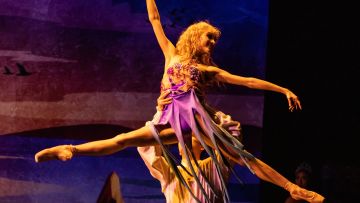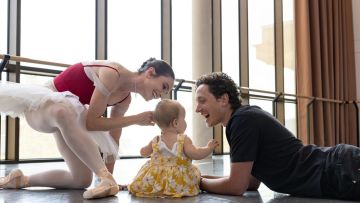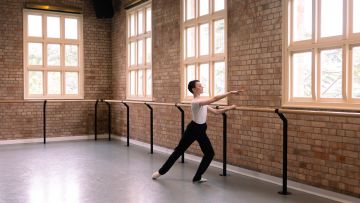The music behind Kenneth MacMillan’s Manon

When Sir Kenneth MacMillan started to create his iconic work Manon, he steered clear of the familiar music of Giacomo Puccini’s opera Manon Lescaut and cherry-picked pieces from the lesser-known music of Jules Massenet. We sat down with Queensland Ballet Music Director and Principal Conductor Nigel Gaynor to find out more.
British composer Leighton Lucas arranged a selection of Jules Massenet’s pieces of music to suit MacMillan’s needs. How has he used the music to communicate the storyline?
Leighton Lucas selected widely from Massenet’s output including themes from 11 operas, and numerous extracts of orchestral music. All the selections are wonderfully melodic, with effective contrasts for the storytelling. There’s opulence and drama throughout the musical score, so it’s a feast for all the senses.
For Manon, you have studied Massenet’s score intensively. Can you tell us about the musical themes or character motifs in Massenet’s music?
The most hauntingly beautiful and sometimes tragic themes are associated with the ill-fated lovers Manon and Des Grieux, who struggle against a society controlled by the wealthy classes. The music for Des Grieux’s first act solo is rather like a prayer - an optimistic appeal for Manon to love him. It then shifts into the minor key of E for their pas de deux, music marked Lento e triste (slowly and sadly). Yet this gorgeous music is both passionate and intense, providing one of the most memorable melodies in the ballet. Their second pas de deux (The bedroom) in Act 1 starts slowly in G minor, again very dark and subdued for a love pas. But it soon shifts into a rapidly flowing G major song, with an abundance of joyous climaxes. The ballet concludes with their final exhilarating pas de deux at the end of Act 3. Despite the fact that they are to perish in the Louisiana swamps, the music conveys a tremendous sense of triumph over adversity, with soaring melodies, swelling fortissimos, and breath-taking choreography to match.
As the Principal Conductor, how do you work with the dancers and artistic team to share the story of Kenneth MacMillan’s Manon?
Firstly, I lead my team of pianists to ensure they play the rehearsals in an ‘orchestral style’ to match the orchestra for the performances. I also attend many rehearsals to ensure I know the choreography thoroughly, and understand any slight differences between casts. The rehearsal tempi are often steadier in the early stages of rehearsal, and so it’s critical to bring the tempi up to the right levels in the final stages, while keeping the musical shape and integrity of the music in step with the ballet. In some places, individual dancers will influence the tempo, while elsewhere the music will drive the pace of the dance. It’s a fascinating relationship for the conductor to navigate, which can make the difference between a good performance and a fantastic performance. It’s been 25 years since I conducted this masterpiece, and so I’m really looking forward to the season!
Witness Kenneth MacMillan's Manon, 28 September – 8 October, at the Lyric Theatre, QPAC. Find out more here.
By Meg Collins



